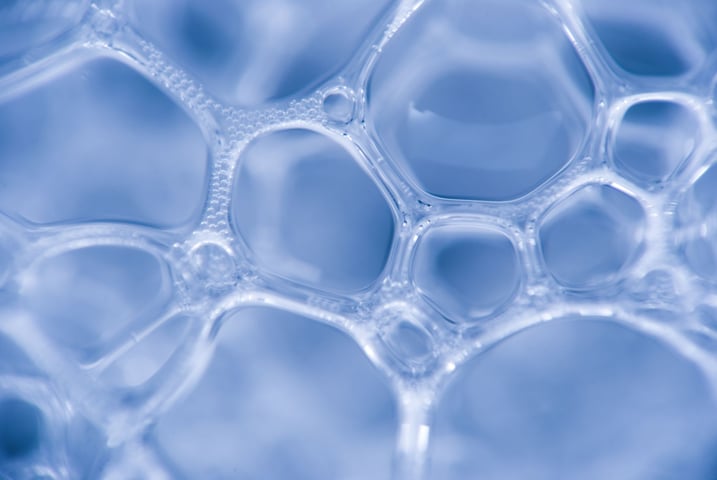
Foam stability refers to the ability of a foam to maintain its structure and resist collapse over time. Understanding foam stability is important for various industrial applications, such as food and beverage production, cosmetic manufacturing, and oil and gas extraction. Aqueous foams i.e., a dispersion of gas-in-water are most used in formulations. These systems are, however, thermodynamically unstable and they break through several de-foaming mechanisms such as evaporation, coarsening or Ostwald ripening, liquid drainage, and coalescence. Traditionally surfactants, polymers, or their mixtures have been used to stabilize foams. While they do provide good foamability, long-term foam stability can be an issue. For this reason, alternative ways have been investigated and nanoparticles (NP) and especially surfactant-nanoparticle composites have shown excellent long-term foam stability. The foaming potential of the different surface-active species is greatly dependent on their behavior at the air-water interface.
To study the behavior of surface-active species at the interface, Langmuir trough has proven to be a powerful tool. The molecules are typically spread at the air-water interface and their packing density is controlled by compressing the monolayer. Surfactant molecules, which are commonly used as stabilizing agents, have hydrophilic and hydrophobic parts facilitating their adsorption at the interface. Nanoparticles are often modified with surfactants to alter their wettability, and thus promote their adsorption at the interface. To study how well strongly nanoparticles are adsorbed Langmuir isotherm can be studied. For strongly adsorbed NPs the packing density at the interface will increase upon compression which can be seen by a change in the slope of the surface pressure-area isotherm. In contrast, NPs with low retention can easily be removed from the air-water interface under compression, leading to negligible resistance to lateral compression, which is evidenced by a lack of increase in surface pressure. Hence, the foaming potential of specific NPs can be straightforwardly predicted by measuring their surface pressure-area isotherms.
To gain deeper insights into NP behavior at the interface, knowledge of interfacial film structure is crucial. The structure of the NP-laden interface often affects the rheological properties of the film, having a significant impact on foam stability. This structure can be precisely controlled by compressing the film while monitoring surface pressure using a Langmuir trough. The Langmuir trough can be easily combined with interfacial shear rheology measurements using an interfacial shear rheometer. Interfacial shear rheology examines the flow or deformation of materials when subjected to stress or load. Combining the Langmuir trough with interfacial shear rheology enables the study of the relationship between structure and rheology. Recent studies indicate that contacting bubbles or droplets will not merge unless the applied load exceeds the shear yield stress of the interfacial film. Interfacial shear viscoelasticity has been shown to correlate with bubble coarsening, with high surface elasticity helping to stabilize the interface against bubble coalescence.
If you would like to learn more about interfacial shear rheology measurements, please register for the webinar through the link below.
K. Yu, B. Li , H. Zhang, Z. Wang, W. Zhang, D. Wang, H. Xu, D. Harbottle, J. Wang, J. Pan, Critical role of nanocomposites at air-water interface: From aqueous foams to foam-based lightweight functional materials, Chemical Engineering Journal 416 (2021) 129121 https://doi.org/10.1016/j.cej.2021.129121
K. Yu, H. Zhang, S. Biggs, Z. Xu, O.J. Cayre, D. Harbottle, The rheology of polyvinylpyrrolidone-coated silica nanoparticles positioned at an air-aqueous interface, Journal of Colloid and Interface Science (2018), doi: https://doi.org/10.1016/j.jcis.2018.05.035
Emulsions are dispersed systems of two immiscible liquids such as oil and water. Interfacial rheology measurements predict emulsion and foam stability.
The same measurement modes used in bulk rheology are also meaningful in interfacial rheology.
Pickering emulsions utilize solid particles to stabilize the interface between the two immiscible liquids
International Congress on Interfacial Rheology was held in Athens from the 29th of July to the 4th of August 2023.
In this blog post, the most common interfacial shear rheology methods are reviewed.
Interfacial rheology studies the response of the interfacial layer to the external stimuli at air-liquid or liquid-liquid interfaces.
Interfacial shear rheology at the gas-liquid or liquid-liquid interface is relevant in a wide range of applications where foams and emulsions are used.
Interfacial rheology is a special branch of rheology that involves studying the unique two-dimensional systems formed at interfaces.
